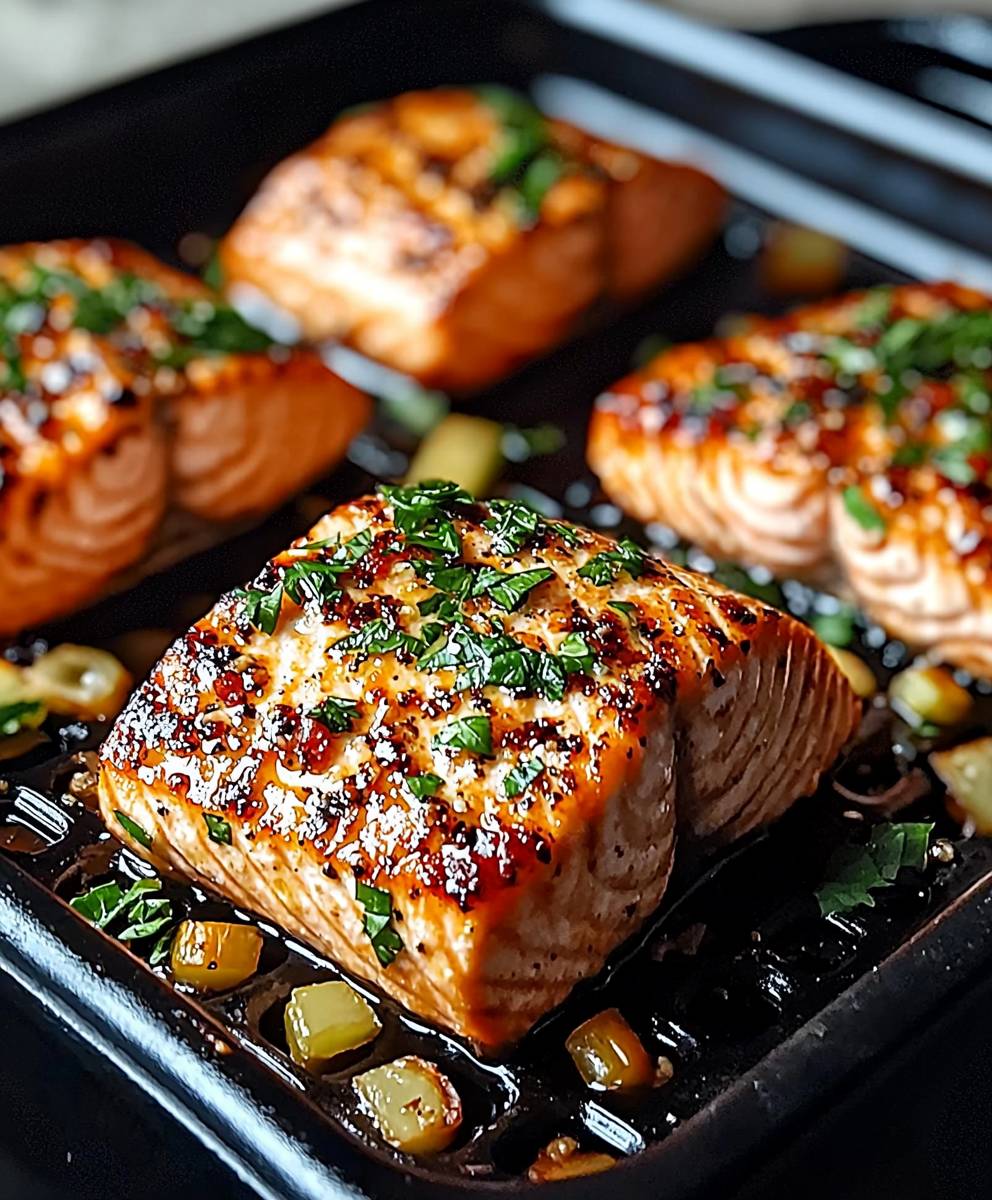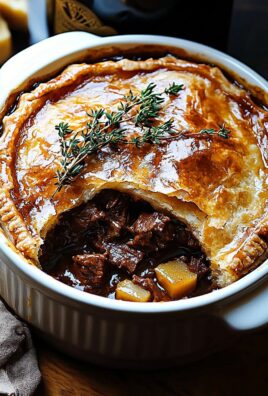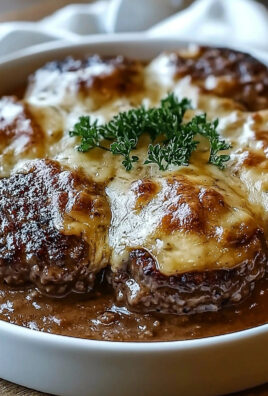Texas Roadhouse Salmon: Craving that melt-in-your-mouth, perfectly seasoned salmon you get at Texas Roadhouse? Well, get ready to recreate that restaurant-quality experience right in your own kitchen! This copycat recipe is so good, you might just ditch the restaurant altogether.
While salmon wasn’t always a staple on Southern-inspired menus like Texas Roadhouse, its popularity has soared in recent years, becoming a beloved healthy and flavorful option. The restaurant’s rendition, known for its buttery texture and savory-sweet glaze, has captured the hearts (and stomachs!) of countless diners.
What makes Texas Roadhouse Salmon so irresistible? It’s the perfect balance of flavors the richness of the salmon is beautifully complemented by a blend of herbs, spices, and a touch of sweetness that caramelizes beautifully during cooking. People adore this dish because it’s incredibly satisfying, relatively healthy, and surprisingly easy to make. Plus, it’s versatile! Serve it with your favorite sides for a complete and delicious meal. I’m excited to share my version of Texas Roadhouse Salmon with you, so you can enjoy this restaurant favorite anytime you want!

Ingredients:
- 2 (6-ounce) salmon fillets, skin on or off, your preference!
- 2 tablespoons olive oil, extra virgin is always a good choice
- 1 tablespoon lemon juice, freshly squeezed makes a difference
- 1 teaspoon garlic powder, because everything is better with garlic
- 1 teaspoon paprika, for that smoky, reddish hue
- ½ teaspoon dried thyme, adds a subtle earthy note
- ½ teaspoon dried oregano, complements the thyme beautifully
- ¼ teaspoon cayenne pepper, just a pinch for a little kick (optional)
- Salt and freshly ground black pepper, to taste, don’t be shy!
- 2 tablespoons butter, unsalted, for that extra richness
- 1 lemon, sliced into wedges, for serving, adds a burst of freshness
- Fresh parsley, chopped, for garnish, makes it look fancy
Preparing the Salmon:
- First things first, let’s get those salmon fillets ready! Pat them dry with paper towels. This is crucial for getting a nice sear. Excess moisture is the enemy of crispy skin (if you’re keeping the skin on, that is!).
- Now, in a small bowl, whisk together the olive oil, lemon juice, garlic powder, paprika, thyme, oregano, and cayenne pepper (if using). This is our flavor bomb!
- Generously season both sides of the salmon fillets with salt and freshly ground black pepper. Don’t be afraid to season well; the salmon can handle it.
- Brush the prepared marinade all over the salmon fillets, ensuring they are evenly coated. Let them sit for at least 15 minutes, or up to 30 minutes, to allow the flavors to meld. The longer they marinate, the more flavorful they’ll be! But don’t go overboard; too long and the lemon juice can start to “cook” the fish.
Cooking the Salmon:
- There are a few ways to cook this salmon, and I’ll walk you through my two favorite methods: pan-searing and baking. Both yield delicious results, so choose whichever suits your preference and equipment.
- Heat a large skillet (cast iron is ideal, but any heavy-bottomed skillet will work) over medium-high heat. Add the butter to the skillet and let it melt completely. The butter adds a lovely richness and helps with browning.
- Once the butter is melted and the skillet is hot, carefully place the salmon fillets in the skillet, skin-side down if you’re using skin-on fillets.
- Sear the salmon for 4-5 minutes, or until the skin is crispy and golden brown (if using skin-on fillets) and the flesh is nicely browned. Don’t move the salmon around too much; let it develop a good sear.
- Flip the salmon fillets and cook for another 3-4 minutes, or until the salmon is cooked through and flakes easily with a fork. The internal temperature should reach 145°F (63°C). Use a meat thermometer to ensure accuracy.
- Remove the salmon from the skillet and set aside to rest for a few minutes. This allows the juices to redistribute, resulting in a more tender and flavorful fillet.
- Preheat your oven to 400°F (200°C).
- Line a baking sheet with parchment paper. This makes cleanup a breeze!
- Place the marinated salmon fillets on the prepared baking sheet, skin-side down or up, depending on your preference.
- Bake for 12-15 minutes, or until the salmon is cooked through and flakes easily with a fork. Again, the internal temperature should reach 145°F (63°C).
- Remove the salmon from the oven and let it rest for a few minutes before serving.
Pan-Searing Method:
Baking Method:
Serving and Garnishing:
- Place the cooked salmon fillets on plates.
- Garnish with fresh parsley and lemon wedges.
- Serve immediately and enjoy!
Tips and Variations:
- Spice it up! If you like things extra spicy, add a pinch more cayenne pepper or a dash of hot sauce to the marinade.
- Herb it up! Feel free to experiment with different herbs. Dill, rosemary, or chives would all be delicious additions.
- Sweeten it up! A touch of honey or maple syrup in the marinade can add a lovely sweetness that balances the savory flavors.
- Add vegetables! Roast some vegetables alongside the salmon for a complete meal. Asparagus, broccoli, or bell peppers would be great choices.
- Make it a sauce! While the salmon is resting, you can deglaze the pan (if you pan-seared it) with a little white wine or chicken broth to create a simple pan sauce. Just scrape up any browned bits from the bottom of the pan and simmer until the sauce has thickened slightly.
- Skin-on vs. Skin-off: This is purely a matter of personal preference. Skin-on salmon will have a crispier texture, while skin-off salmon will be more tender. If you’re using skin-on salmon, be sure to score the skin a few times before cooking to prevent it from curling up.
- Don’t overcook it! Salmon is best when it’s cooked to medium, meaning it’s still slightly translucent in the center. Overcooked salmon will be dry and tough.
- Fresh vs. Frozen: Fresh salmon is always best, but frozen salmon can be a good option if you don’t have access to fresh. Just be sure to thaw it completely before cooking.
- Storage: Leftover cooked salmon can be stored in the refrigerator for up to 3 days. Reheat gently in the microwave or oven.
Pairing Suggestions:
- Sides: Roasted vegetables (asparagus, broccoli, Brussels sprouts), quinoa, rice, mashed potatoes, sweet potato fries, salad.
- Drinks: White wine (Sauvignon Blanc, Pinot Grigio), rosé, light-bodied red wine (Pinot Noir), iced tea, lemonade.
Nutritional Information (per serving, approximate):
- Calories: 350-400
- Protein: 35-40g
- Fat: 20-25g
- Carbohydrates: 2-3g
Enjoy your delicious and healthy Texas Roadhouse-inspired salmon! I hope you love it as much as I do. Remember to adjust the seasonings to your liking and don’t be afraid to experiment with different variations. Happy cooking!

Conclusion:
This Texas Roadhouse Salmon recipe is more than just a meal; it’s an experience. The perfectly balanced blend of sweet, savory, and smoky flavors, combined with the melt-in-your-mouth texture of the salmon, makes it an absolute must-try for any seafood lover. Seriously, I’ve made this countless times, and it’s always a crowd-pleaser. It’s surprisingly easy to prepare, yet delivers restaurant-quality results that will impress your family and friends. Forget complicated cooking techniques and long ingredient lists this recipe is all about maximizing flavor with minimal effort.
But the best part? It’s incredibly versatile! While I personally love serving this salmon with a side of roasted asparagus and creamy mashed potatoes (just like at Texas Roadhouse!), the possibilities are truly endless. For a lighter meal, try pairing it with a vibrant quinoa salad or a simple green salad with a lemon vinaigrette. If you’re feeling adventurous, you could even flake the cooked salmon and use it as a filling for tacos or wraps.
Serving Suggestions and Variations:
* Spice it up: Add a pinch of cayenne pepper to the marinade for a little extra heat.
* Go Mediterranean: Serve the salmon with a side of couscous, olives, and feta cheese.
* Make it a bowl: Combine the salmon with brown rice, avocado, edamame, and a drizzle of sriracha mayo for a healthy and satisfying bowl.
* Grill it: If you prefer a smoky flavor, grill the salmon instead of baking it. Just be sure to keep a close eye on it to prevent it from drying out.
* Lemon-Herb Variation: Skip the brown sugar and Dijon mustard. Instead, marinate the salmon in a mixture of lemon juice, olive oil, garlic, and fresh herbs like dill and parsley.
I truly believe that this recipe will become a staple in your kitchen. It’s perfect for a weeknight dinner, a special occasion, or even a casual get-together. The ease of preparation and the incredible flavor make it a winner every time. Plus, it’s a fantastic way to incorporate healthy and delicious seafood into your diet.
So, what are you waiting for? Grab your ingredients, preheat your oven, and get ready to experience the magic of this Texas Roadhouse Salmon recipe. I’m confident that you’ll love it as much as I do.
And now for the fun part! I’m so excited for you to try this recipe and put your own spin on it. Once you’ve made it, please, please, please come back and share your experience in the comments below. Did you make any modifications? What sides did you serve it with? What did your family and friends think? I’m eager to hear all about your culinary adventures! Your feedback is invaluable and helps me continue to improve and share even more delicious recipes with you. Happy cooking! I can’t wait to see what you create! Don’t forget to tag me in your photos on social media I’d love to see your creations!
Texas Roadhouse Salmon: A Delicious and Healthy Recipe
Flaky salmon fillets marinated in lemon, garlic, and herbs, then pan-seared or baked. A quick and easy weeknight meal!
Ingredients
- 2 (6-ounce) salmon fillets, skin on or off
- 2 tablespoons olive oil, extra virgin
- 1 tablespoon lemon juice, freshly squeezed
- 1 teaspoon garlic powder
- 1 teaspoon paprika
- ½ teaspoon dried thyme
- ½ teaspoon dried oregano
- ¼ teaspoon cayenne pepper (optional)
- Salt and freshly ground black pepper, to taste
- 2 tablespoons butter, unsalted
- 1 lemon, sliced into wedges, for serving
- Fresh parsley, chopped, for garnish
Instructions
- Pat the salmon fillets dry with paper towels.
- In a small bowl, whisk together the olive oil, lemon juice, garlic powder, paprika, thyme, oregano, and cayenne pepper (if using).
- Season both sides of the salmon fillets with salt and freshly ground black pepper.
- Brush the prepared marinade all over the salmon fillets. Let them sit for at least 15 minutes, or up to 30 minutes.
- Heat a large skillet (cast iron is ideal) over medium-high heat. Add the butter to the skillet and let it melt completely.
- Carefully place the salmon fillets in the skillet, skin-side down if using skin-on fillets.
- Sear the salmon for 4-5 minutes, or until the skin is crispy and golden brown (if using skin-on fillets) and the flesh is nicely browned.
- Flip the salmon fillets and cook for another 3-4 minutes, or until the salmon is cooked through and flakes easily with a fork. The internal temperature should reach 145°F (63°C).
- Remove the salmon from the skillet and set aside to rest for a few minutes.
- Preheat your oven to 400°F (200°C).
- Line a baking sheet with parchment paper.
- Place the marinated salmon fillets on the prepared baking sheet, skin-side down or up, depending on your preference.
- Bake for 12-15 minutes, or until the salmon is cooked through and flakes easily with a fork. The internal temperature should reach 145°F (63°C).
- Remove the salmon from the oven and let it rest for a few minutes before serving.
- Place the cooked salmon fillets on plates.
- Garnish with fresh parsley and lemon wedges.
- Serve immediately.
Notes
- Spice it up! Add more cayenne pepper or hot sauce to the marinade.
- Herb it up! Experiment with different herbs like dill, rosemary, or chives.
- Sweeten it up! Add a touch of honey or maple syrup to the marinade.
- Add vegetables! Roast vegetables alongside the salmon.
- Make it a sauce! Deglaze the pan (if pan-seared) with white wine or chicken broth to create a pan sauce.
- Skin-on vs. Skin-off: Personal preference. Score skin-on salmon to prevent curling.
- Don’t overcook it! Cook to medium (slightly translucent in the center).
- Fresh vs. Frozen: Fresh is best, but thaw frozen salmon completely before cooking.
- Storage: Store leftovers in the refrigerator for up to 3 days. Reheat gently.




Leave a Comment